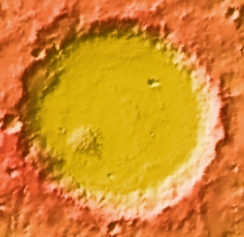NASA considering purchase of communications services
Capitalism in space: Rather than build its own communications satellites, as it has done in the past, NASA is now considering purchasing these services from private communications satellite companies.
NASA had been studying a next-generation communications system that would ultimately replace the current generation of Tracking and Data Relay Satellite (TDRS) spacecraft in Earth orbit, as well as support missions beyond Earth orbit. That included the possibility of partnerships with the private sector.
“Past networks have been expensive to operate and maintain because they were designed to only serve government customers, which has limited their ability to leverage commercial partnerships,” the agency said in its fiscal year 2019 budget proposal released in February. “The next generation project will engage with commercial industry through mechanisms such as services contracts, hosted payloads, and other public-private-partnerships to allow multiple commercial entities to partner with the Government in order to significantly reduce and eventually eliminate reliance on NASA or NASA contractor run ground systems.”
In a paper presented last year by several NASA officials at the International Astronautical Congress in Adelaide, Australia, the agency said working with both commercial and international partners would be among the elements of its next-generation architecture. “Using open, commercial, and international standards will enable the use of commercial services by specifying required performance and interfaces without specifying provider-specific capabilities,” the paper stated. “Commercial entities will compete based on price, quality, timeliness, support and other factors that maintain a competitive environment.”
That desire to work with the commercial sector, along with harnessing new technologies like optical communications, was a reason cited by NASA a year ago for not exercising an option for an additional TDRS satellite under a contract NASA awarded to Boeing in 2007. The last satellite built under that contract, TDRS-M, launched in August 2017.
Using commercial communications satellites makes perfect sense. It will be faster, provide more redundancy, and will save the taxpayer a lot of money.
Capitalism in space: Rather than build its own communications satellites, as it has done in the past, NASA is now considering purchasing these services from private communications satellite companies.
NASA had been studying a next-generation communications system that would ultimately replace the current generation of Tracking and Data Relay Satellite (TDRS) spacecraft in Earth orbit, as well as support missions beyond Earth orbit. That included the possibility of partnerships with the private sector.
“Past networks have been expensive to operate and maintain because they were designed to only serve government customers, which has limited their ability to leverage commercial partnerships,” the agency said in its fiscal year 2019 budget proposal released in February. “The next generation project will engage with commercial industry through mechanisms such as services contracts, hosted payloads, and other public-private-partnerships to allow multiple commercial entities to partner with the Government in order to significantly reduce and eventually eliminate reliance on NASA or NASA contractor run ground systems.”
In a paper presented last year by several NASA officials at the International Astronautical Congress in Adelaide, Australia, the agency said working with both commercial and international partners would be among the elements of its next-generation architecture. “Using open, commercial, and international standards will enable the use of commercial services by specifying required performance and interfaces without specifying provider-specific capabilities,” the paper stated. “Commercial entities will compete based on price, quality, timeliness, support and other factors that maintain a competitive environment.”
That desire to work with the commercial sector, along with harnessing new technologies like optical communications, was a reason cited by NASA a year ago for not exercising an option for an additional TDRS satellite under a contract NASA awarded to Boeing in 2007. The last satellite built under that contract, TDRS-M, launched in August 2017.
Using commercial communications satellites makes perfect sense. It will be faster, provide more redundancy, and will save the taxpayer a lot of money.




